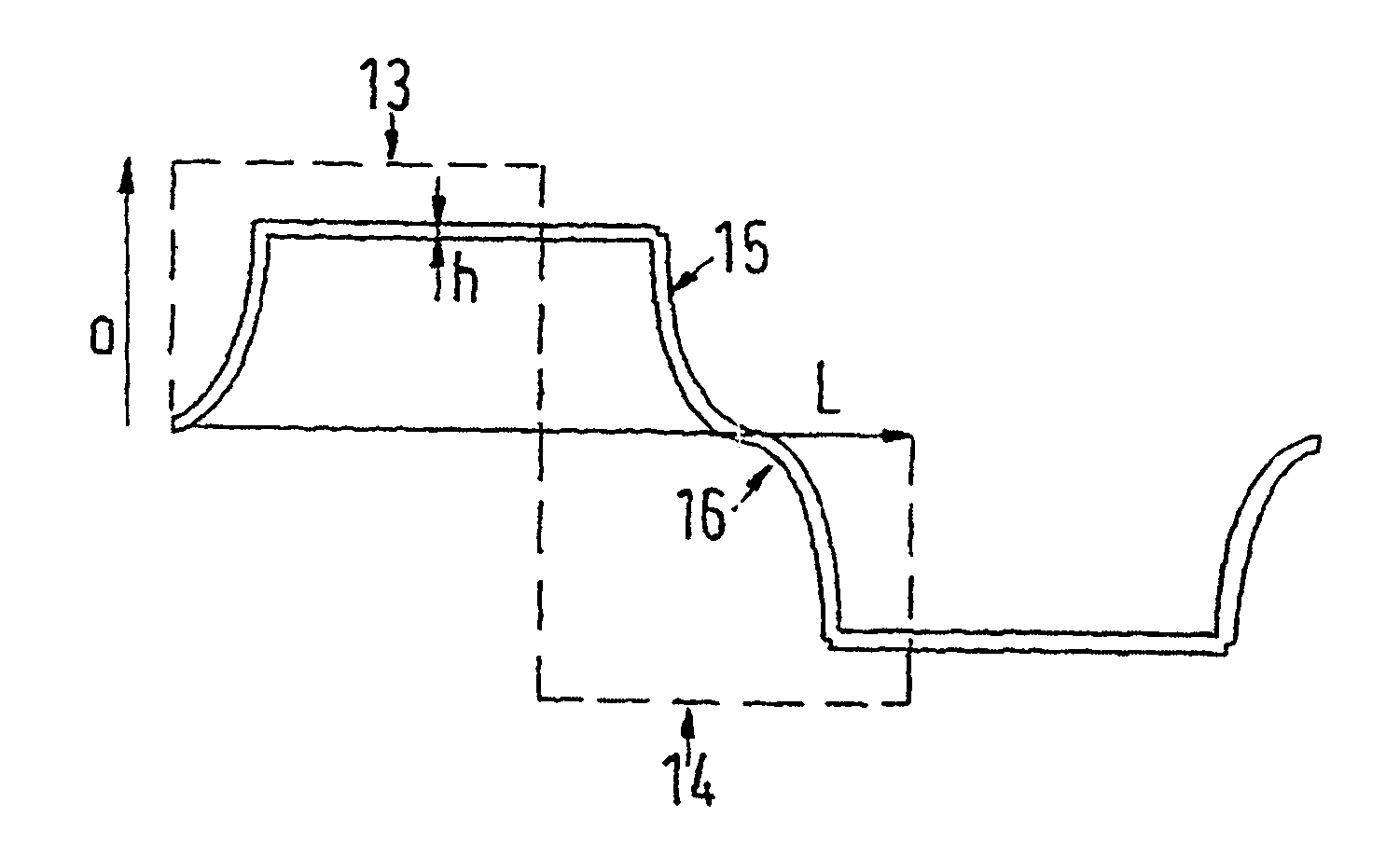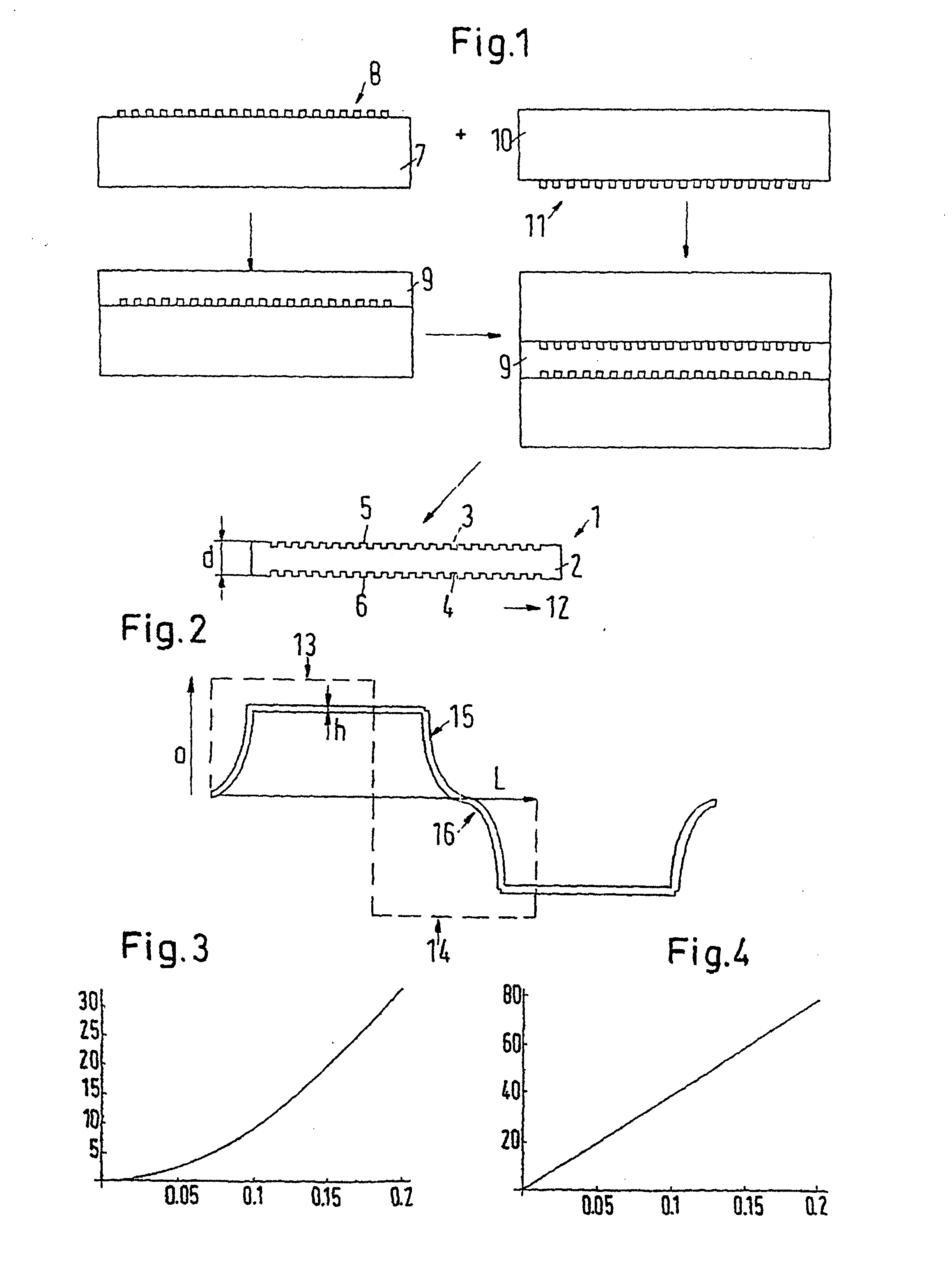Actuating member and method for producing the same
a technology of actuating members and cylinders, which is applied in the direction of ligaments, generators/motors, coatings, etc., can solve the problems of limiting the dynamism of the actuating member, and achieve the effect of small thickness
- Summary
- Abstract
- Description
- Claims
- Application Information
AI Technical Summary
Benefits of technology
Problems solved by technology
Method used
Image
Examples
Embodiment Construction
[0024]FIG. 1 shows different steps for the making of an actuating member 1 with a body 2, which body has two boundary surfaces 3, 4 lying oppositely to one another. Applied to each of the boundary surfaces 3, 4 is an electrode 5, 6, respectively. The electrodes 5, 6 are directly connected to the body 2. The body 2 is formed of an elastomer material, for example, a silicone elastomer, and preferably has dielectric properties. The material of the body 2 is of course deformable. It has however, a constant volume, that is if one compresses the body 2 in the direction of the thickness d there then results an increase in the extent of the body 2 in the two other directions. If one then limits the extension of the body 2 in one direction, the decrease in the thickness d leads entirely to an increase of the extension of the body 2 in the other direction. In the case of the exemplary embodiment of FIG. 1 the extension possibility perpendicular to the plane of the drawing (transverse directio...
PUM
| Property | Measurement | Unit |
|---|---|---|
| Length | aaaaa | aaaaa |
| Thickness | aaaaa | aaaaa |
| Pressure | aaaaa | aaaaa |
Abstract
Description
Claims
Application Information
 Login to View More
Login to View More - R&D
- Intellectual Property
- Life Sciences
- Materials
- Tech Scout
- Unparalleled Data Quality
- Higher Quality Content
- 60% Fewer Hallucinations
Browse by: Latest US Patents, China's latest patents, Technical Efficacy Thesaurus, Application Domain, Technology Topic, Popular Technical Reports.
© 2025 PatSnap. All rights reserved.Legal|Privacy policy|Modern Slavery Act Transparency Statement|Sitemap|About US| Contact US: help@patsnap.com



